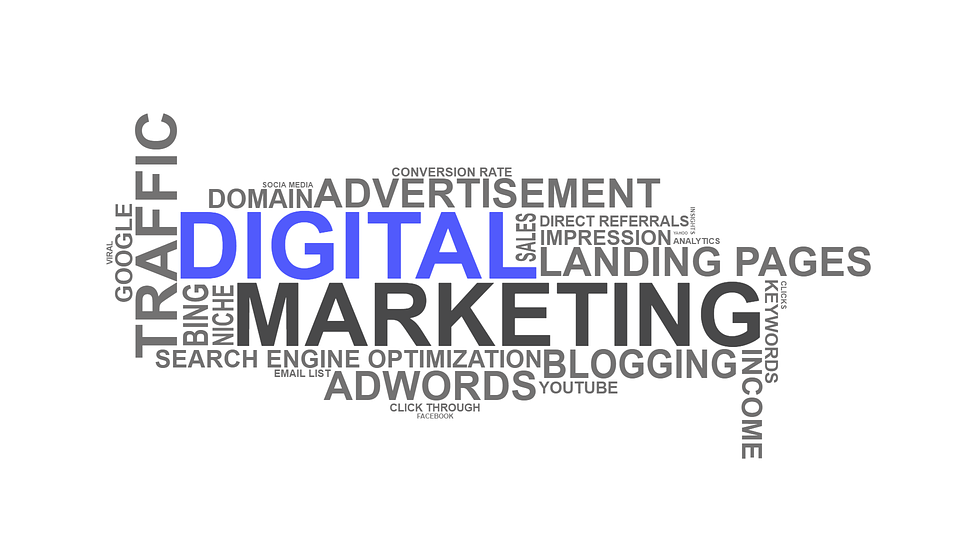Digital marketing refers to promoting products and services via digital technology, such as the internet, social media, mobile phone, or other digital mediums.
It can also be used as a general term to encompass different marketing strategies, such as Social Media Marketing and Search Engine Optimization.
Digital marketing is more data-driven than traditional marketing methods like billboards and print. For detailed data analysis, many digital advertising platforms offer access to campaign reports.
Digital marketing company can now combine the power of the internet and technology to collect data about customer behaviour and user engagements. This allows them to create more targeted content and ads for specific audiences, which will lead to better employment and better results.
Digital marketing offers many benefits over traditional marketing:

Trackable and measurable
It is now possible to evaluate the effectiveness of marketing campaigns using digital analytics dashboards like Google Analytics, Google Data Studio, and Adobe Analytics.
The data you have collected over time is available to you through digital analytics. Each user interaction (touchpoint with your business) produces its own data set. This allows you to segment the data to understand how each touchpoint affects your bottom line (sales and conversions).
Any action that a user takes to convert, such as downloading a whitepaper, submitting an inquiry form, or making an online payment, is considered a conversion.
This will allow you to identify which touchpoints resonate most with your target audience and help you replicate this success in future campaigns.

Optimizing Efficiency
Marketers can now purchase advertising space across multiple websites and mobile apps and receive live reports within hours.
This allows marketers to analyze campaign performance and make adjustments on the fly to optimize ad creatives for audience engagement.
Broad and targeted reach
Your budget is the most critical factor in limiting your reach on social media platforms such as Facebook, YouTube, Linked In, and LinkedIn. You can target specific audiences on many social media platforms, such as demographics, interests, and behavioral patterns (e.g., retargeting).
Retargeting allows you to show relevant ads only to people who have visited your site. Let’s say a user visits an online grocery store and then navigates to a page that sells apples. The grocery shop could then target the user with ads-related apples after leaving the website and guiding them to other websites, social media platforms, and mobile apps
.
3 Pillars of Digital Marketing
Digital Marketing has three pillars. These are:
User-Journey: The user journey is the first pillar in digital marketing. The customer journey is the interaction and encounter with your brand on all digital and offline channels. It shapes his perceptions and emotions about your brand.
It usually starts at the awareness stage and ends with the purchase (or advocacy) stage.
1. Awareness: First time the customer becomes aware of the brand.
2. Consideration (interest/evaluation): The customer needs to evaluate his decision and consider other brands.
3. Purchase (desire/action: The customer has decided to purchase.
4. Loyalty (advocacy): A customer spreads word of the brand and tells his friends.
Customers interact with your Content or Creative on many digital channels (social media search, display ads, search) and land on your website.
Your goal is to get him to convert as soon as he visits your website or mobile app.
Digital Channels
Digital marketing channels are the second pillar in digital marketing.
Marketing channels are mediums that organizations use to communicate with consumers.
Digital channels are a way for customers to learn about your business and the services it offers. This is where you get your Traffic (users).
These are just a few examples of digital marketing channels:

Organic Search
People use search engines for many reasons. Google handles more than 40,000 queries per minute (3.5 billion queries per day) and is the largest search engine.
Below the paid search ads, organic search results are displayed.
To rank websites high on the organic search engine result pages (S.E.R.P.s), search engine optimization is a digital strategy that marketers use.
Paid Search
Paid search results are at the top of S.E.R.P.s.
Sign up for a Google Ads Account to advertise your website in the Google paid search results. Then, implement a digital marketing strategy called search engine marketing (S.E.M.). You can find out more.

Display
Display channels refer to ads that are displayed on pages as users browse them.
You can place your ads on websites by using Google Ads or another demand-side platform.

According to Statista, there are approximately 4 billion email users worldwide. Email remains one of the most used mediums for businesses to communicate with customers.
Digital marketers use digital marketing strategies (also known as email marketing or marketing automation) to send relevant and targeted emails to segmented subscribers.

Social Media
Social media needs no introduction. It is used daily by people to stay up-to-date with the latest news and connect with friends and family worldwide.
Social media is a way for businesses to reach potential customers and engage them more personally, authentic. You can use social media marketing tools to understand your target audience’s needs across various social media platforms. This will allow you to better tailor your content so that it engages your target audience.

Referral
Referral traffic is generated by users clicking backlinks and navigating to other websites (the hyperlink target) or from the website. This refers to Traffic coming from other websites and not directly searching Google.
Referral links can be made through strategic online partnerships or by using earned media. Online P.R. Online P.R. is one of the best ways to generate brand awareness, acquire backlinks and make brand mentions.




